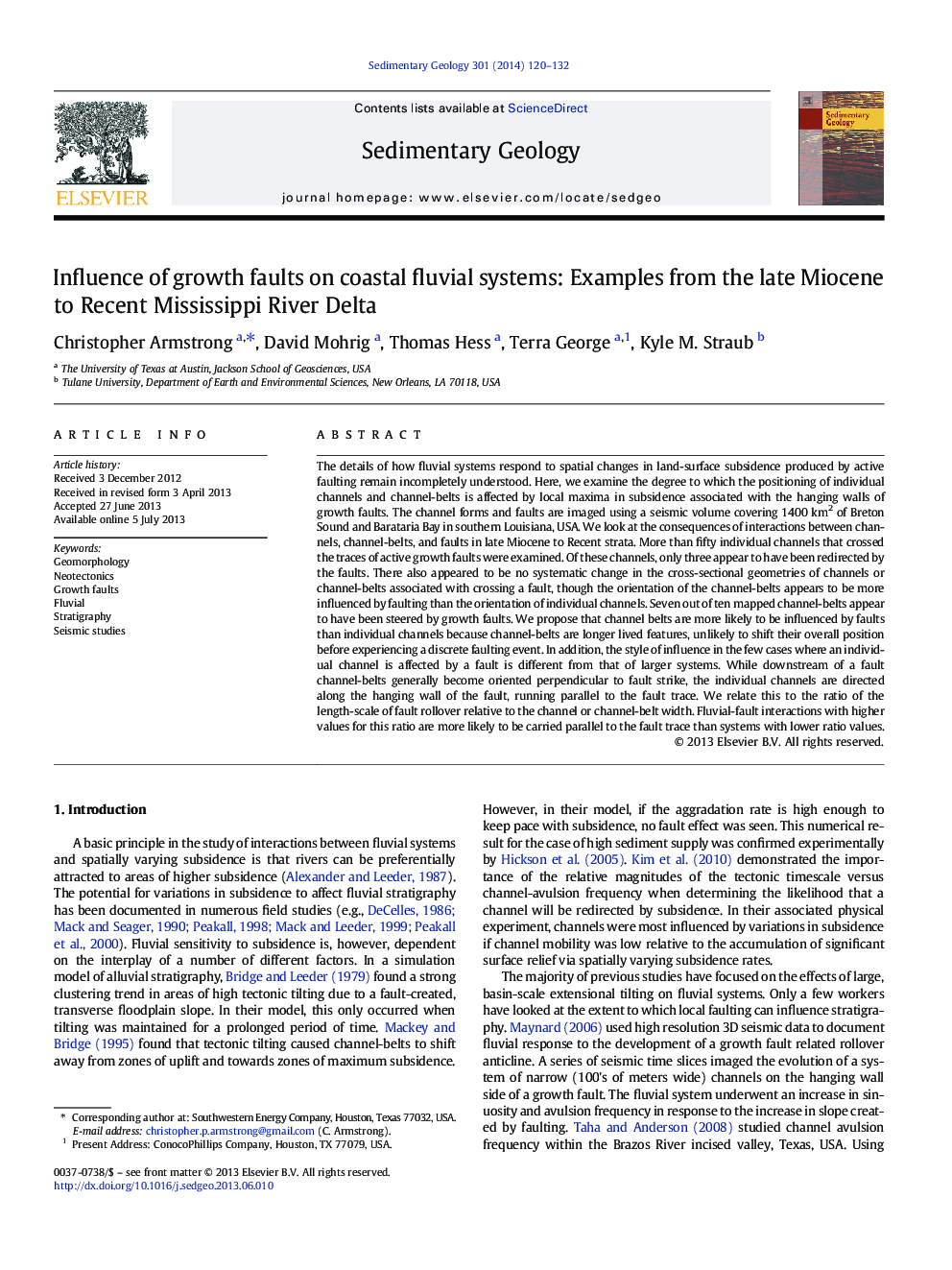| کد مقاله | کد نشریه | سال انتشار | مقاله انگلیسی | نسخه تمام متن |
|---|---|---|---|---|
| 4689413 | 1636062 | 2014 | 13 صفحه PDF | دانلود رایگان |
عنوان انگلیسی مقاله ISI
Influence of growth faults on coastal fluvial systems: Examples from the late Miocene to Recent Mississippi River Delta
ترجمه فارسی عنوان
تأثیر گسل های رشد در سیستم های دریایی ساحلی: نمونه هایی از اواخر میوسن تا دلتای رودخانه اخیر می سی پی
دانلود مقاله + سفارش ترجمه
دانلود مقاله ISI انگلیسی
رایگان برای ایرانیان
کلمات کلیدی
موضوعات مرتبط
مهندسی و علوم پایه
علوم زمین و سیارات
فرآیندهای سطح زمین
چکیده انگلیسی
The details of how fluvial systems respond to spatial changes in land-surface subsidence produced by active faulting remain incompletely understood. Here, we examine the degree to which the positioning of individual channels and channel-belts is affected by local maxima in subsidence associated with the hanging walls of growth faults. The channel forms and faults are imaged using a seismic volume covering 1400Â km2 of Breton Sound and Barataria Bay in southern Louisiana, USA. We look at the consequences of interactions between channels, channel-belts, and faults in late Miocene to Recent strata. More than fifty individual channels that crossed the traces of active growth faults were examined. Of these channels, only three appear to have been redirected by the faults. There also appeared to be no systematic change in the cross-sectional geometries of channels or channel-belts associated with crossing a fault, though the orientation of the channel-belts appears to be more influenced by faulting than the orientation of individual channels. Seven out of ten mapped channel-belts appear to have been steered by growth faults. We propose that channel belts are more likely to be influenced by faults than individual channels because channel-belts are longer lived features, unlikely to shift their overall position before experiencing a discrete faulting event. In addition, the style of influence in the few cases where an individual channel is affected by a fault is different from that of larger systems. While downstream of a fault channel-belts generally become oriented perpendicular to fault strike, the individual channels are directed along the hanging wall of the fault, running parallel to the fault trace. We relate this to the ratio of the length-scale of fault rollover relative to the channel or channel-belt width. Fluvial-fault interactions with higher values for this ratio are more likely to be carried parallel to the fault trace than systems with lower ratio values.
ناشر
Database: Elsevier - ScienceDirect (ساینس دایرکت)
Journal: Sedimentary Geology - Volume 301, 15 March 2014, Pages 120-132
Journal: Sedimentary Geology - Volume 301, 15 March 2014, Pages 120-132
نویسندگان
Christopher Armstrong, David Mohrig, Thomas Hess, Terra George, Kyle M. Straub,
